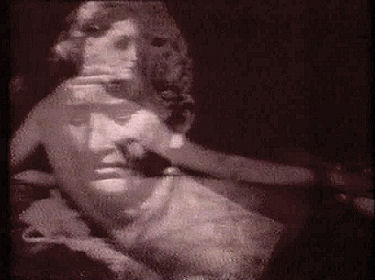 |
The second half of the Humanities Television Workshop project was entitled Images of Perfection: an essay in visual thinking. Known in-house as Suite for Paul, it was made by Don Hallock, with assistance from Bill Roarty and Dean Peterson. Original sound design was by Rick Davis. The entire piece is in four sections, and was done entirely on the Templeton Video Mixer.
A note on this style of 'visual thinking': Suite for Paul consists of many individual images bridged by unconventionally slow dissolves or cross-fades. While most of our media experience has become increasingly frenetic, in this 'developmental' style of working, much of the message, and implied significance, is conveyed in these slow metamorphoses. While the images remain overlapped, and the viewer searches for something definitive, new connections and unexpected thoughts are supplied by the mind, tumbling over each other, adding many new layers to what might, under more conventional approaches, simply be a linear narrative.
 |
 |
 |
| For instance, in this image, are the subjects thinking of each other; remembering each other; having feelings or holding attitude about each other - or possibly what each other represents? |
Normally, a cross-fade is simply a way of transitioning from one scene to another. But in this style, the images themselves are only brief content 'place-holders.' and the unhurried dissolve is an extended field in which consciousness explores what it imagines it may be seeing - and, in the process, implies layers of possible content. This way of working is more closely akin to poetry, wherein the individual images are like words, and the cross-fading approximates the spark-like implications derived from verbal meanings collecting and colliding in the mind. Unfortunately, these static images can only hint at the effect. In all but a few cases you will have to imagine the cross-fades. |
 |

